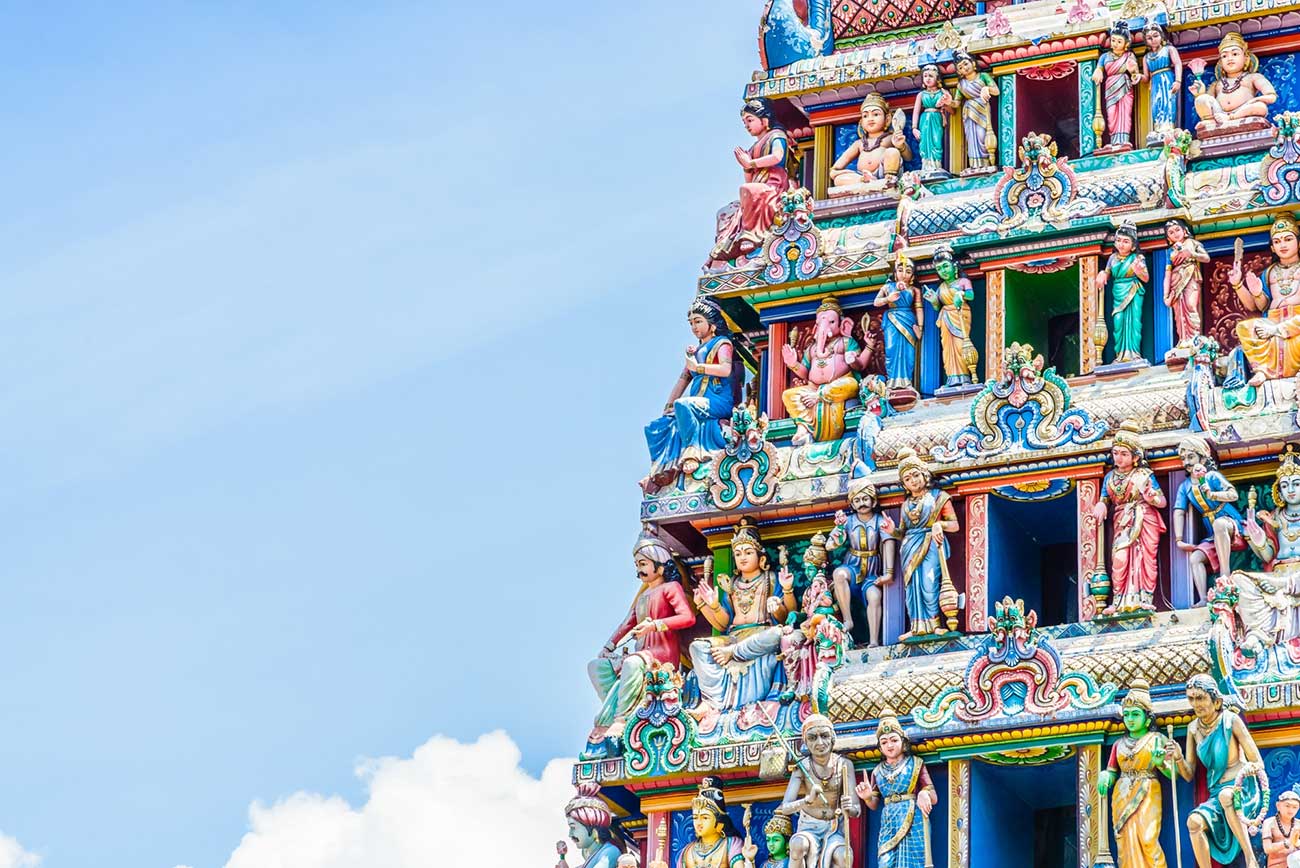
Little India
Heritage, Temples & Everyday Color
Nestled just east of the Singapore River, Little India tells a layered story of migration, commerce, and cultural continuity. What began as a hub for livestock trade evolved into the city’s most vivid ethnic enclave—where vendors, temples, and street art stand alongside modern eateries and evolving traditions.
A Neighborhood Rooted in Trade and Heritage
Originally used for cattle and livestock by Indian migrant workers, Little India grew around the Serangoon River and gradually transformed from swampy grazing fields to a colorful, working-class district rich in commerce and heritage.
Today, the area remains a center of South Asian heritage, particularly active during Diwali celebrations, which light up Serangoon Road with festive décor and bazaars.
Streets Alive with Culture and Color
Walking through Little India is a sensory experience. Serangoon Road and its alleys hum with:
- Temple façades adorned with intricate carvings and colorful gopurams, like those of Sri Veeramakaliamman and Sri Srinivasa Perumal.
- Street art and murals, such as the “Traditional Trades of Little India,” which bring local history to life with paint.
- Shophouses painted in jewel tones, each echoing a story of heritage and commerce.
Markets, Cuisine, and Everyday Trade
- At Tekka Centre, a two-story complex with a wet market below and food stalls above, you’ll find a mix of Indian, Malay, and Chinese fare, along with fresh produce and tailoring services.
- Mustafa Centre, open 24/7, offers everything from spices and electronics to travel services, making it a neighborhood icon.
- Walk down Serangoon Road and explore shops selling everything from sari fabric at Haniffa Textiles to religious items at Jothi Store & Flower Shop.
Spiritual Spaces and Sacred Sites
- Sri Veeramakaliamman Temple: One of the most photogenic sites in the neighborhood, its ornate exterior and active worship create a quiet focal point.
- Sri Srinivasa Perumal Temple: A National Monument featuring a towering five-tier gopuram adorned with deities; built in 1855 and later expanded.
- Angullia Mosque: A landmark of Indo-Islamic architecture, built in 1890 and still serving its community today.
- You’ll also find Sakya Muni Buddha Gaya Temple, the “Temple of a Thousand Lights,” merging Indian, Thai, and Chinese styles.

Location
Basic Information
Free to walk and go every day anytime
More things to do in Singapore
St Andrew’s Cathedral
Discover St Andrew’s Cathedral—Singapore’s oldest Anglican house of worship, edged in Neo-Gothic architecture, from convict-built...
Pulau Ubin
Discover Pulau Ubin, Singapore’s rustic island preserve—reachable by bumboat, offering kampong heritage, cycling trails...
National Gallery Singapore
Discover the National Gallery Singapore: housed in restored colonial courts and city hall, now a luminous home to over 8,000 Southeast...
Merlion Park
Located at Marina Bay’s edge, Merlion Park is home to Singapore’s iconic lion-fish statue—a symbol of origin and identity—with...
Haw Par Villa
Discover Haw Par Villa in Singapore: an eccentric heritage park featuring over 1,000 sculptures, terrazzo dioramas, and the famed...
National Museum of Singapore
Explore the National Museum of Singapore—home to immersive exhibits, architectural heritage, and centuries of history unfolding...
Fort Canning Park
Discover Fort Canning Park in Singapore—a hillside space where history, heritage gardens, and wartime relics come together beneath...
Singapore Riverfront
Wander along the Singapore Riverfront—from heritage Clarke, Boat, and Robertson Quays to waterside dining, casual cruises, and skyline views.
Are you ready to start discovering Singapore?
Check some of the best tours below to make the best of your trip!













